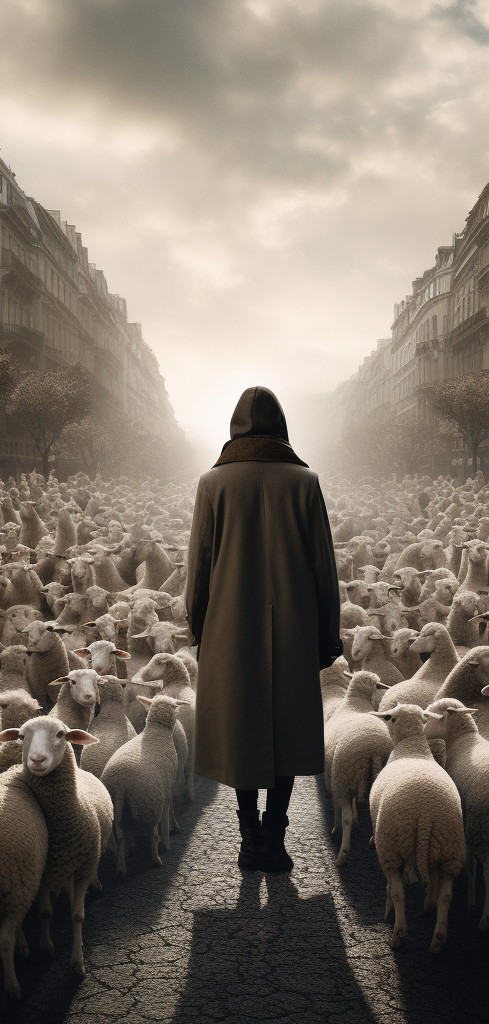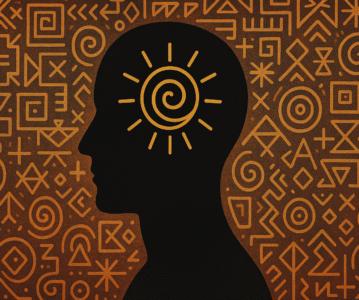By Gary King
Everything is symbol, and the symbol is everything.
— Goethe
Meaning Is Not Optional
We live in a time that prizes facts, data, and material explanations. We’re told the world is made of particles and probabilities—and perhaps it is. But here’s something you may not have considered:
We never see raw reality.
We only see it through patterns.
From the moment we’re born, we’re immersed in interpretation. We don’t just sense—we sort, we structure, we assign meaning. We are meaning-making creatures. That isn’t a weakness. It’s how consciousness works.
There’s no stepping outside it. There is no unfiltered view of the world. Even the most advanced science requires a frame, a metaphor, a symbol. And that means pattern isn’t just something we notice in reality.
Pattern is how reality shows up for us at all.
The Ancient Language of Opposites
Long before modern science, humans intuited something profound: that reality moves in opposites. Not contradictions—but polarities that define and depend on each other.
Above and below. Light and dark. Seed and soil. Pattern and potential.
These primal opposites appear in every mythology, philosophy, and religious tradition for a reason. They aren’t just quaint stories. They are symbolic attempts to describe the way things are.
Let’s take the most basic example: Heaven and Earth.
- Heaven represents that which is above us—ideals, purposes, the invisible structure that holds meaning. It’s where we get light, wind, even names. You can’t see light itself, but without it, you see nothing.
- Earth, by contrast, is the place of embodiment. It’s the soil that takes the seed. It’s chaos until given form. It is potential waiting for a pattern.
From this duality, everything else unfolds. And not just cosmologically—but practically. Even a simple object, like a glass, has its “heaven” (the pattern of what it should be) and its “earth” (the matter and form that make it real).
Fractals: The Pattern That Repeats
Here’s where it gets fascinating.
This structure—heaven above, earth below—doesn’t just apply to the cosmos. It repeats itself at every level of existence.
This is the nature of a fractal—a pattern that reproduces itself, scale after scale.
- Your body is a microcosm. Your head (sight, breath, speech, pattern) is like heaven. Your body (movement, appetite, power) is like earth.
- A tree follows this pattern. So does a society. So does a military hierarchy. So does an ecosystem.
- Even your immune system works this way: introducing variation (earth) and testing it against a pattern (heaven) to find what works.
The stories of ladders, pyramids, and cosmic wheels found in cultures around the world aren’t fantasies. They’re maps—diagrams of how reality unfolds.
You climb the ladder not just to succeed, but to align. The mountain is not just geography—it’s psychology. The wheel doesn’t just turn—it balances.
When the Pattern Breaks
But what happens when we forget the pattern?
When we try to live in the world as if meaning is negotiable, as if truth is relative, as if structure doesn’t matter?
The result is predictable: fragmentation, addiction, disorder.
Appetites that should serve higher goods become tyrants. Lower functions start impersonating higher ones.
And then, just like in the myths, the son overthrows the father. Kronos castrates Uranus. But with the father gone, Kronos must eat his children to retain power.
That’s what tyranny looks like: when authority loses its connection to the source and must rule by fear, not meaning.
Sound familiar?
We’ve seen this pattern play out in revolutions, in regimes, even in corporate boardrooms. When the part tries to be the whole, collapse isn’t far behind.
Returning to the Center
The good news is: the pattern hasn’t gone anywhere.
We may forget it, ignore it, mock it—but it’s still there. Whispering through story. Speaking in symbol. Guiding us toward coherence, if we’re willing to listen.
Every story of ascent—Moses on the mountain, the monk on the ladder, the center of a mandala—is an invitation. Not to escape Earth, but to harmonize it with Heaven.
The true “spiritual” path isn’t floating away. It’s learning to stand—truly stand—as the bridge between the visible and the invisible. Between meaning and matter.
That’s what it means to be human.
We are the ladder.
We are the axis.
We are the pattern, walking.
A Final Thought
You don’t have to believe in ancient deities or religious dogma to see this.
Just pay attention to how you speak.
You say someone “rose to the occasion.” That an idea has “no grounding.” That a person has “lost their center.”
You already think this way.
The symbols are baked into your perception.
So perhaps it’s time we stop calling it superstition and start calling it what it is:
A deeper literacy.
A symbolic grammar of reality.
A way home.


